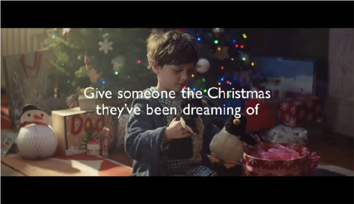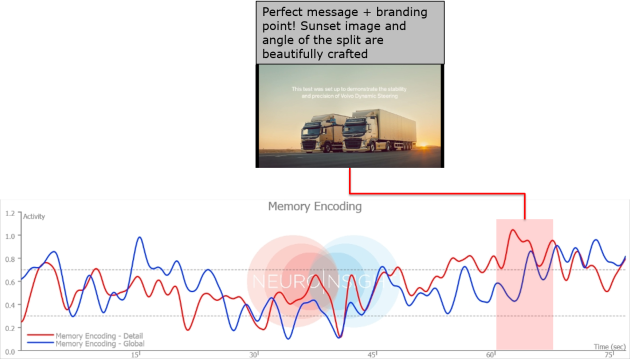
Creativity & Payback – Common Threads through the Years
For the fifth year now, Adnews & Neuro-Insight have teamed up to look at the Cannes award winners through the lens of neuroscience. It’s always fascinating to get another take on the award winners by simply measuring what consumers’ pure responses are to those beautifully crafted ads – the same ads that we’ve just heard so much commentary & opinion about for the past week or so.
The long view on effectiveness
Looking back over the years of Effectiveness award winners, what’s the common thread between these creative pieces that have driven tangible business results? Is there a rule to making highly effective ads? The rule is – there are no hard & fast rules! Every creative has it’s own unique chemistry which is impossible to distil down to a formula. But there are common characteristics shared by the Cannes Effectiveness award winners…that manifest in their own unique ways. They’re all unique, and yet they do share these common threads. The key is to evaluate how these ads have performed from a conscious and unconscious Long Term Memory Encoding standpoint. What we do know, is that specific moments must be stored in Long Term Memory, if the ad is to have any level of marketplace performance or behaviour change. Here are the three of the strongest common threads.
1. No Blatant Selling
No obvious sales pitch is the one common trait that really sells! The doorway to memory stays open when a storyline earns the right to the consumer’s engagement. It appears to be very difficult for a hard sell itself to successfully ‘get in’ and earn this right.
2. Strong storylines / subtle mix of emotions
The neuro data points to a delicate mix of emotions within a powerful storyline. Emotional measures like Engagement, Emotional Intensity and Approach / Withdraw, in combination, point to a subtle mix of emotions. These emotions constantly ebb and flow. John Lewis’ Monty the Penguin – the 2016 winner – plays on the nostalgia of childhood friends, the sadness of loneliness & gift-giving.

The Volvo Epic Split campaign (2015 award winner) elicits anxiety and relief in the target group of males.
Whereas, the Axe Excite creative (2012 Winner) delivered intrigue along with sexual tension – particularly at key moments eg. Particularly when the angels dispense with their halos.

All of the effectiveness winners have strong storytelling power which has the viewer intrigued – to some degree – wondering ‘where is this story going’? The answer is never revealed until after branding and messaging has been successfully delivered, which leads us to our final point.
3. One powerfully crafted moment wraps everything together
Whilst strong storytelling is generally important, all of the effectiveness award winners tend to capitalise on one very specific moment. They all deliver message & branding at a point in the storyline that has very high levels of Long Term Memory Encoding. Not all moments are created equal, and all of the effectiveness winners integrate message and branding (especially branding) at a peak moment (of Memory Encoding) within a liner storyline. Once the brand ‘owns’ this moment, it also has the power of gluing the whole campaign ecosystem together.
The Volvo Epic Split achieved this extremely well (see graphic below) delivering ‘Volvo Dynamic Steering’ at a point that is at the top 4% of our effectiveness benchmarks. Monty the Penguin & the Angels Will Fall creative also easily hit our Memory Encoding benchmarks. This is the common thread of highly effective creativity. They never miss the moment.
Creativity that defers message and branding a second or two after this peak in linear storylines, risk failure. The long view of effectiveness is about the balance of big picture storytelling as much as it’s about the supreme importance of a moment.

How we do it?
To investigate these award winners, Neuro-Insight measured brain activity to see how 50 females and 50 males respond to the ad. The specific technology used by Neuro-Insight is founded in work originally developed for academic and neuroscience research and has been used to analyse the effectiveness of Cannes award winners for over five years.
The technology allows us to simultaneously record viewer’s second-by-second changes in approach (like)/withdraw (dislike), emotional intensity, engagement and memory whilst watching advertisements. The measure Neuro-Insight predominantly focus on based on its strong and highly researched link in influencing consumer behaviours is Long-term Memory Encoding. This measure reveals what the brain is storing (or encoding) into conscious and unconscious long-term memory. Neuro-Insight’s Memory Encoding graph reveals how elements of the ad are stored in long-term memory. The higher the graph, the more strongly that moment in the ad is stored in memory and the more likely it will influence consumer behaviour.
Have something to say on this? Share your views in the comments section below. Or if you have a news story or tip-off, drop us a line at adnews@yaffa.com.au
Sign up to the AdNews newsletter, like us on Facebook or follow us on Twitter for breaking stories and campaigns throughout the day.

